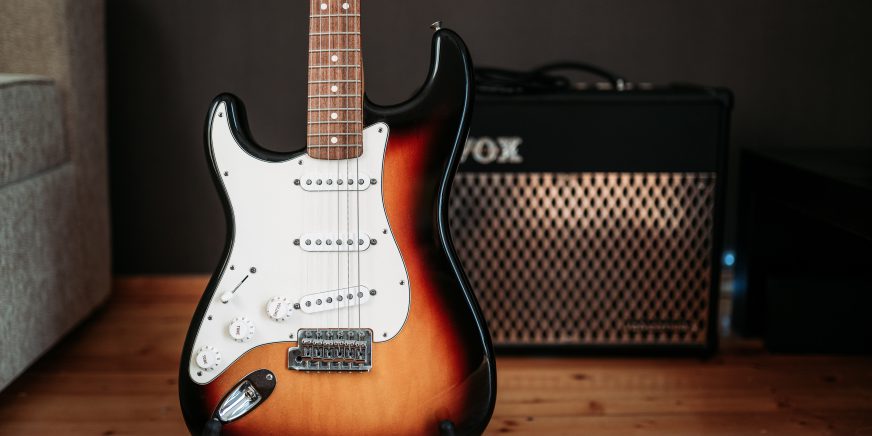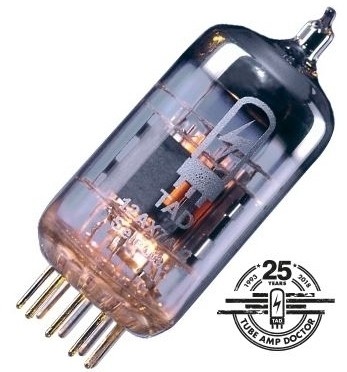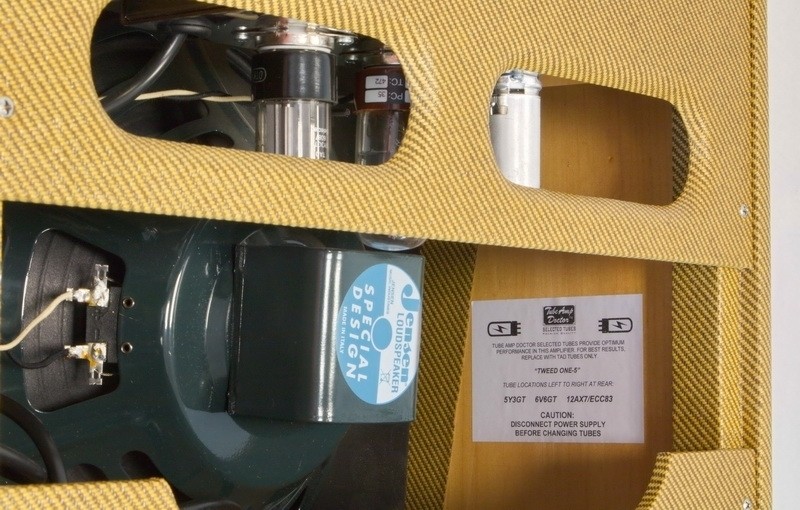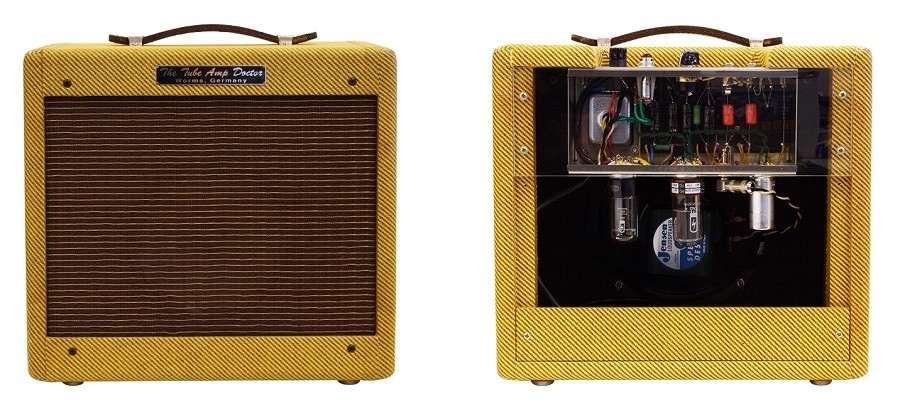« Checkup on small amps »
Tube amps are enjoying increasing popularity despite their analogue technology. Especially among guitarists, the sound and character of tube amplifiers are highly appreciated. In addition to more sensitive amplifier components and high maintenance intensity, tube amplifiers usually have the disadvantage of taking up a lot of space for themselves. If you can do without three-digit wattages and speaker towers, you’ll find a lot of interesting options for real tube sound in a handy format in the area of mini tube amplifiers. The small casings and the relatively low output power make these amps particularly interesting for rehearsal rooms and practicing at home. Today we’ll take a look at a mini tube amp and compare them with their bigger siblings. Have fun!
Small-format tube amp – technical differences and similarities
On a technical level, in principle the mini amp isn’t all that different from the maxi version. The basic work inside the amplifier runs according to the same principles: depending on the design of the amplifier, the sound is modulated in a preamplifier and then passed on, either via an effect loop or directly to the power amplifier. From here, the signal is finally transmitted to the connected speakers.

The signal amplification is accomplished by electron tubes. As with classic tube amplifiers in a large format, the signals pass through different components and are finally amplified inside the electron tube. The type and number of tubes installed differs from manufacturer to manufacturer and cannot be generalised. Considering the fact that most mini tube amplifiers are designed for home use, these amplifiers usually have headphone outputs to allow for silent practice. As with large tube amplifiers, the connection to loudspeakers or speaker cabinets is made via a special speaker cable. Some amplifiers also offer the possibility of transmitting the signal directly to a computer and making the (home) recording of the tube sound particularly easy and fast.
By the way: Like with classic amps in the large format, there is a lot of heat generated at the tubes of the small devices. While large devices have enough space for waste heat, the small amps need a little “room to breathe”. Installing them in the right location ensures sufficient cooling of the sensitive components.
Why a mini tube amp?
Röhrenverstärker gelten als Nonplusultra in der Welt des Gitarrensounds. Doch warum sollten sich Gitarristen für einen Mini-Röhrenverstärker entscheiden, wenn die großen Geschwister sich doch seit Jahrzehnten am Markt etabliert haben?
Area of application
Mini tube amplifiers aren’t suitable for playing large venues and stages without the additional amplification of a PA system. They were developed to offer the guitarist the opportunity to also enjoy the advantages of an appealing and naturally amplifying tube amp at home and within their own four walls. Due to a relatively low power (usually in the single-digit watt range), the amplifiers can be brought into the range of distortion without extreme volumes. Of course, the form factor of the casing also has to be taken into account – not every guitarist has the opportunity to set up a Marshall full stack in their own home.
In combination with recording possibilities or effects devices, a mini amplifier is ideal for rehearsing at home, recording ideas and even making ambitious home recordings without additional miking of the amplifier.

Nevertheless, mini amplifiers shouldn’t be dismissed as a pure practice amplifier: with the right miking, even small amplifiers can be stirred up to provide enormous volume. And the low wattage shouldn’t put anyone off either: guitar legend Joe Bonamassa regularly performs with relatively small or low-power amplifiers, which have been on the world’s stages for decades. With the right miking, this is no problem even in locations like the Royal Albert Hall – although this will probably be relevant to only a few of our readers.
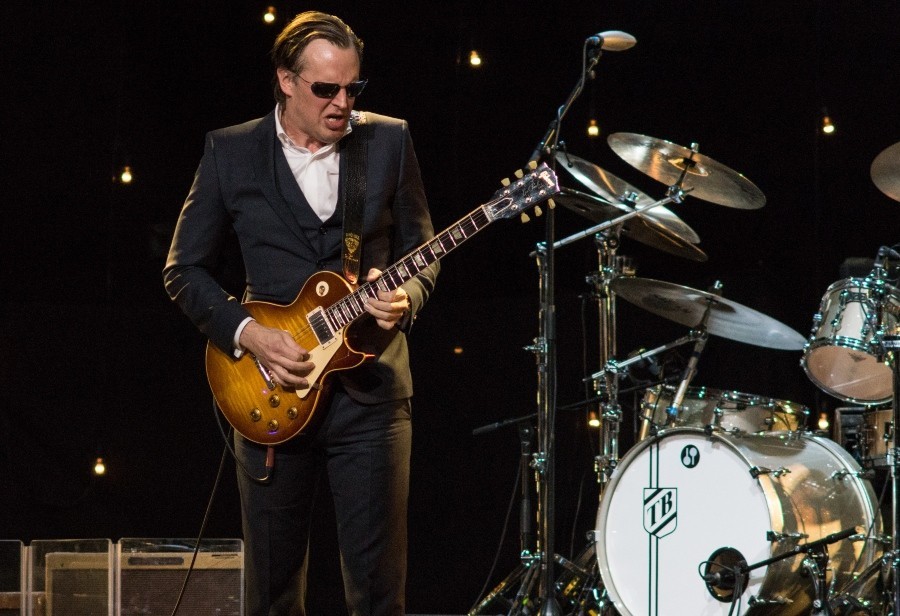
Performance
The performance of a mini tube amp is usually in the lower single-digit watt range. In addition to the purpose of use (see above), the reason for this is also the casing size. While large tube amplifiers can accommodate extensive preamps and power amplifiers, the small devices often only offer space for a few tubes. However, due to the lower power, a mini tube amp has the great advantage of being able to reach the tube saturation range without any major problems, even in the home. While classic 50 – 100 watt amplifiers can hardly ever be brought into the range of power tube distortion without putting your own ears or those of your fellow human beings under a lot of strain, tube amplifiers with 1 – 5 watts can easily be brought to the right level.
Who is a mini tube ampsuitable for?
Of course: mini amps are jumping on the current tube trend. Tube amps are more in guitarists’ focus than they have been for a long time. But who should choose an amplifier in miniature format? We’ll consider some common scenarios:
Beginners
Due to their compact design and relatively low power, miniature tube amps are significantly cheaper than their grown-up counterparts. So they’re particularly suitable for beginners who have so far only had a little experience with the topic of tube technology. Especially as a beginner, you aren’t always willing to spend several thousand euros on equipment without knowing whether you’ll stick with the hobby over the years. So the low cost and the relatively easy handling of these devices offers the ideal entry into the world of tube amplifiers. But be careful: starter drugs often lead to an unquenchable desire for more…

Home recorders and diligent technicians
Due to their compact design, the small tube amps offer great advantages for home recording and daily practice on the instrument: while recording can also be done with amp simulations, nothing beats the dynamic response of tube amps. So, both when recording and when practicing, the behaviour of a real tube amp is worth its weight in gold.
Whether it’s as a second amplifier or as a designated practice environment: miniature amplifiers also offer advanced players and professionals the opportunity to rely on the great sound of a real tube amplification at any time.
Globetrotters
A lot of guitarists and musicians are real globetrotters. If you don’t want to give up the sound of a good old tube amplification while on the go, miniature amplifiers are the best choice. Integrated headphone outputs and a hand luggage-friendly format also provide the amplification you need in the hotel room or on the tour bus – given a reliable power source.
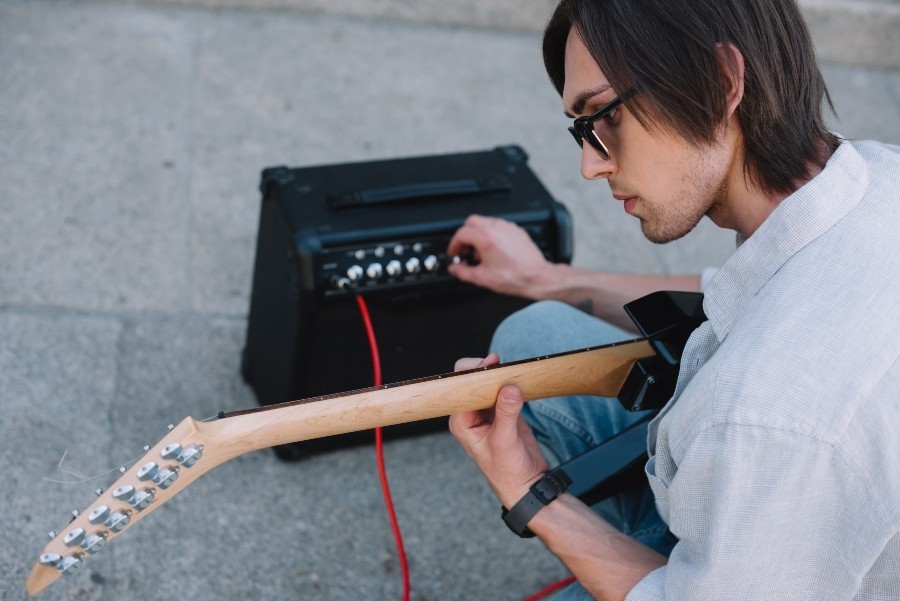
Mini amp – Our conclusion
Due to its compactness and its easy-to-handle output power, the Mini Amp offers plenty of advantages. In addition to being used as a practice amp at home or as a home recording option, mini amplifiers also offer large tube sound on the go.
Depending on the features of the different devices, they don’t just offer reduced versions of the original, but the real and full sound of tube amplification. Whether it’s as a gateway drug into the world of tube amps or as a replacement for or supplement to your own fleet of amplifiers: an amp in mini format is a great addition to the market and can enthuse you with its own charm!
___________________________________________________________________________________________________________________________
Image sources:
Title Image: © Oliver – stock.adobe.com
Young man with headphones playing electric guitar at home: © blackday – stock.adobe.com
Joe Bonamassa at Radio City Music Hall: ©Dmileson |wikipedia.org | https://creativecommons.org/licenses/by-sa/4.0/
Boy learns to play the guitar : © New Africa – stock.adobe.com
Young man on the street with amplifier: © LIGHTFIELD STUDIOS – stock.adobe.com
 Tubeampdoctor Magazin
Tubeampdoctor Magazin
